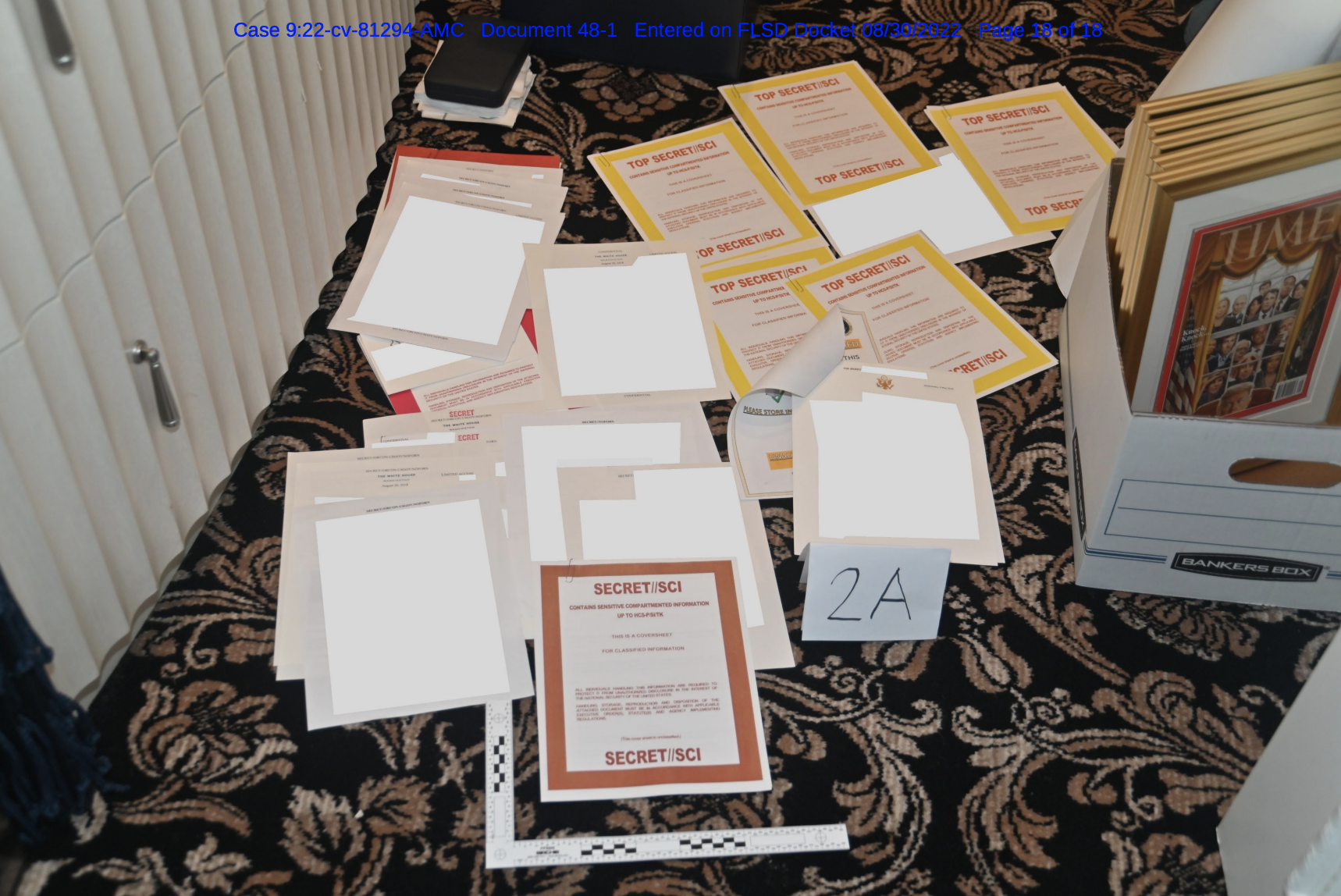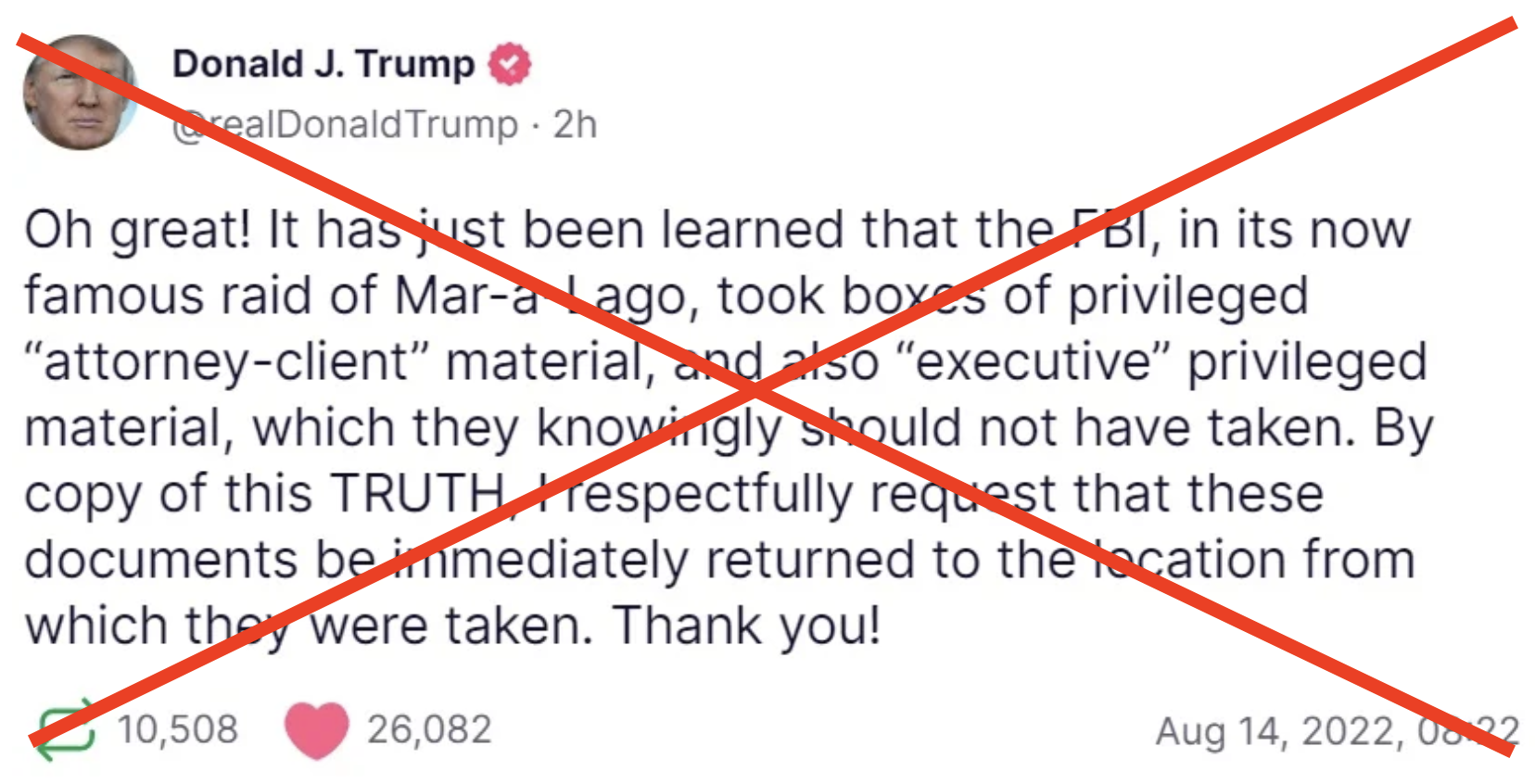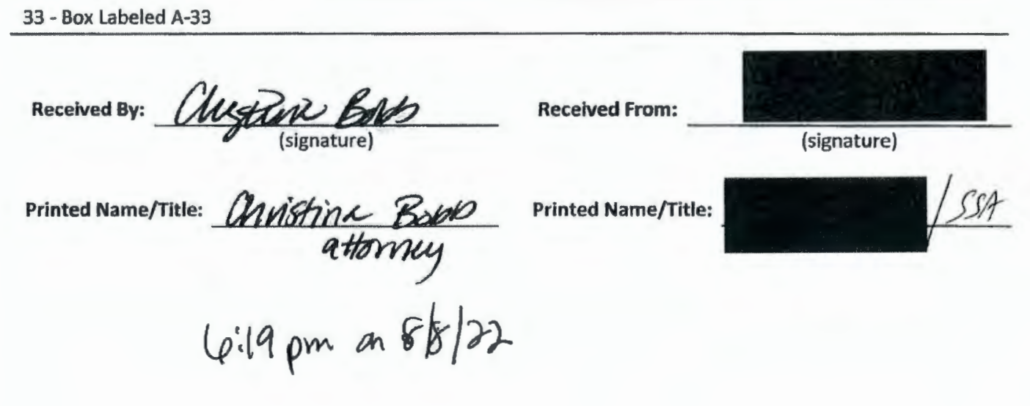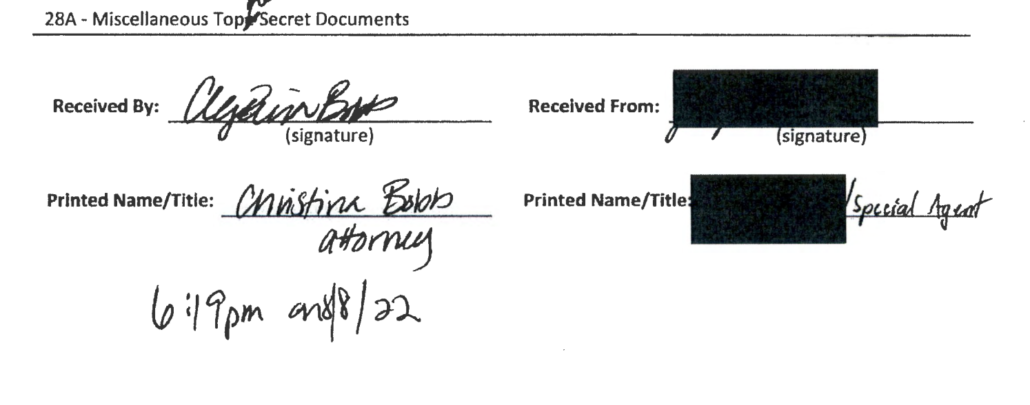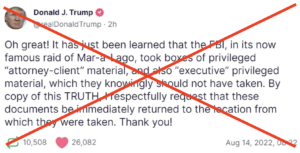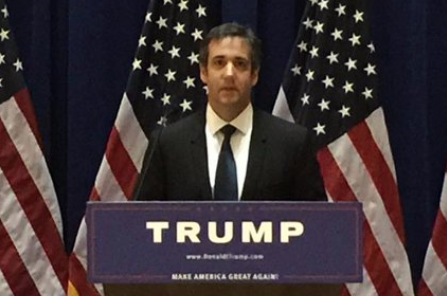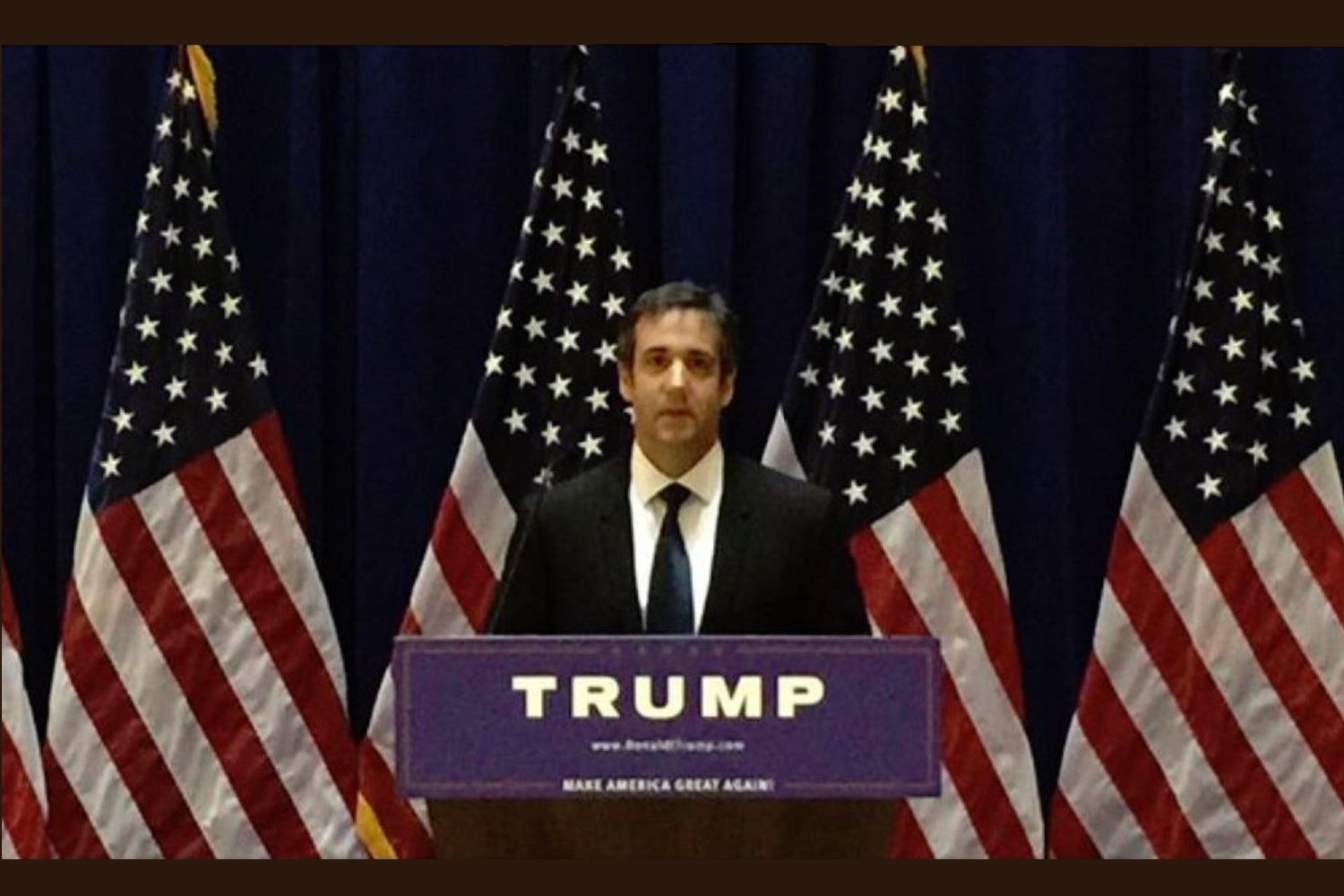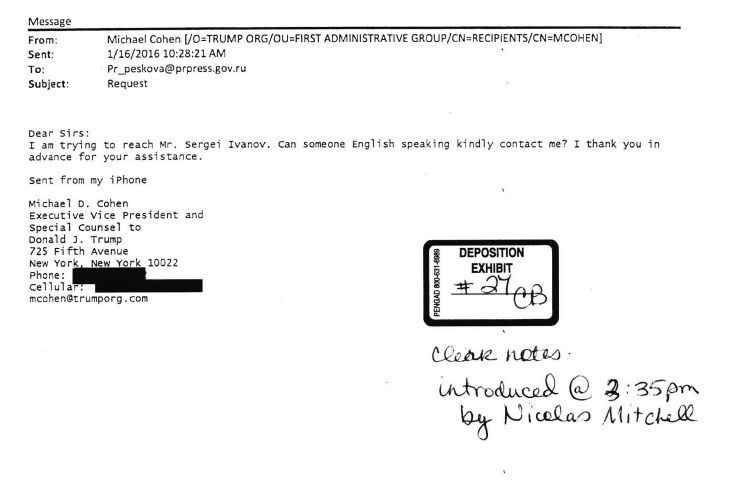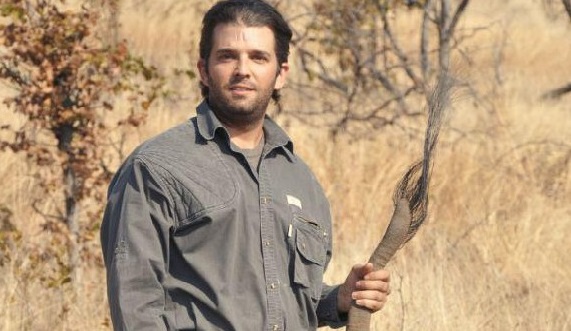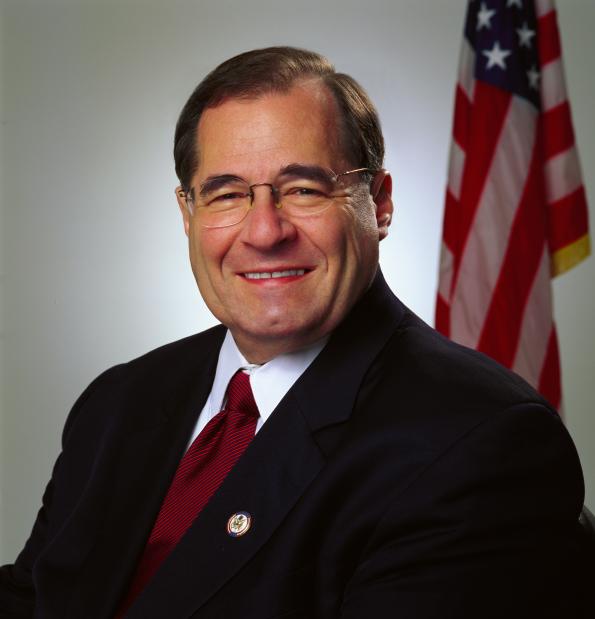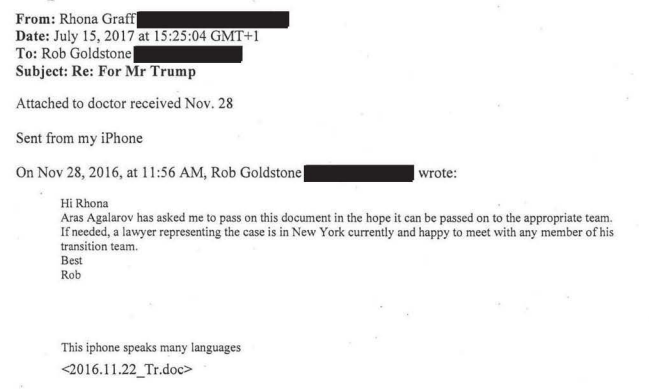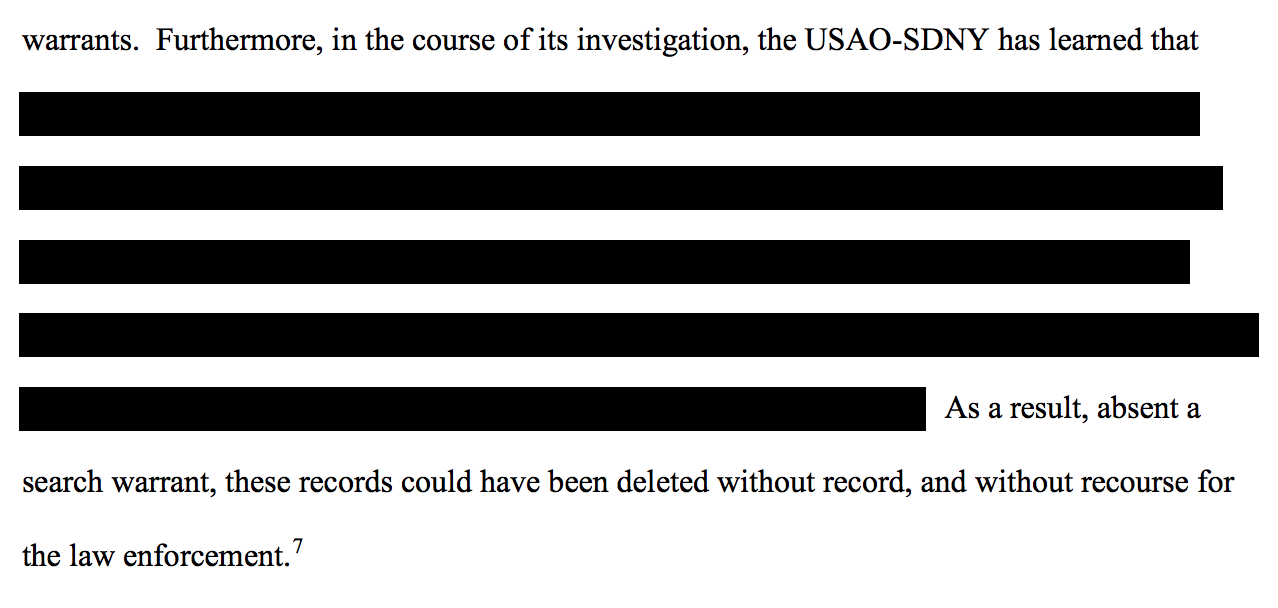Chekhov’s Alan Garten: The Human Gaps in the Surveillance Footage Gap
This post noted, shortly after Trump’s first stolen documents indictment, that the indictment included nothing about the gaps in surveillance footage DOJ spent much of the last year investigating. It also noted that the indictment did not name the maintenance guy who had played a role in moving boxes around.
But the indictment doesn’t hint at when DOJ found gaps in surveillance footage, the topic of numerous recent interviews, or how those gaps got there. In fact, the maintenance guy who flooded the server room doesn’t appear to be mentioned in the indictment at all (his actions are described in ¶61 and ¶72, without a label for him).
As Jay Bratt’s notice to Aileen Cannon of the new details in the superseding indictment released last night explained, those paragraphs now identify newly-charged Carlos De Oliveira by name.
Paragraphs 62 and 63 now identify De Oliveira as the person who helped Nauta move approximately 30 boxes from Trump’s residence to the Storage Room on June 2, 2022, whereas paragraph 61 of the earlier indictment referred to De Oliveira as “an employee of The Mar-a-Lago Club”;
Paragraph 73 alleges that De Oliveira was one of the “others” identified in paragraph 72 of the original indictment who, on June 3, 2022, with Nauta, “loaded several of Trump’s boxes along with other items on aircraft that flew Trump and his family north for the summer”;
Yet even with the inclusion of De Oliveira in the indictment, the gaps about the gaps in the surveillance footage remain.
The conspiracy added to the indictment, laid out in ¶74 through ¶87, describes an attempt to destroy surveillance footage. As described, Walt Nauta and De Oliveira asked someone, identified in the indictment as Trump Employee 4 but who is likely Yuscil Taveras (identified in this story from NYT), to delete the surveillance server, but he said he could not. He told De Oliveira to contact the supervisor of security for Trump Organization.
83. On Monday, June 27, 2022, at 9:48 a.m., DE OLIVEIRA walked to the IT office where Trump Employee 4 was working with another employee in the IT department. DE OLIVEIRA requested that Trump Employee 4 step away from the office so that DE OLIVEIRA and Trump Employee 4 could talk.
84. At 9:49 a.m., Trump Employee 4 and DE OLIVEIRA left the area of the IT office together and walked through a basement tunnel. DE OLIVEIRA took Trump Employee 4 to a small room known as an “audio closet” near the White and Gold Ballroom. Once inside the audio closet, DE OLIVEIRA and Trump Employee 4 had the following exchange:
a. DE OLIVEIRA told Trump Employee 4 that their conversation should remain between the two of them.
b. DE OLIVEIRA asked Trump Employee 4 how many days the server retained footage. Trump Employee 4 responded that he believed it was approximately 45 days.
c. DE OLIVEIRA told Trump Employee 4 that “the boss” wanted the server deleted. Trump Employee 4 responded that he would not know how to do that, and that he did not believe he would have the rights to do that. Trump Employee 4 told DE OLIVEIRA that DE OLIVEIRA would have to reach out to another employee who was the supervisor of security for TRUMP’s business organization. DE OLIVEIRA then insisted to TRUMP Employee 4 that “the boss wanted the server deleted and asked, “what are we going to do?” [my emphasis]
But that section ends with Nauta and De Oliveira meeting in the bushes just off Mar-a-Lago property the next day, then walking to the IT office, then walking back to the bushes again. There’s no allegation that Nauta and De Oliveira succeeded in deleting the video.
The entire section is bookended with these paragraphs, which — and I say this as a PhD in Comparative Literature — are narratively brilliant.
74. On June 3, 2022, when FBI agents were at The Mar-a-Lago Club to collect the documents with classification markings from Trump Attorney 1 and Trump Attorney 3, the agents observed that there were surveillance cameras located near the Storage Room.
75. On June 22, 2022, the Department of Justice emailed an attorney for TRUMP’s business organization a draft grand jury subpoena requiring the production of certain security camera footage from The Mar-a-Lago Club, including footage from cameras “on ground floor (basement),” where the Storage Room was located.
76. On June 23, 2022, at 8:46 p.m., TRUMP called DE OLIVEIRA and they spoke for approximately 24 minutes.
[snip]
87. [On June 27] At 3:55 p.m., TRUMP called DE OLIVEIRA and they spoke for approximately three and a half minutes. [my emphasis]
The section starts and ends with a call to Trump. But never explains how the gaps ended up in the surveillance footage.
Let me go back.
As noted, and as Bratt noted, the original indictment didn’t identify De Oliveira at all. He was just some “other” guy involved, an employee of the club. In fact, in its first indictment, DOJ used a curious dual form of naming. The following people are clearly identified:
- Trump and Nauta
- Trump Employee 1
- Trump Employee 2 (Molly Michael)
- PAC Representative (reportedly Susie Wiles)
- Trump Representative 1 (probably Alex Cannon)
- Trump Attorney 1 (Evan Corcoran)
- Trump Attorney 2 (possibly Boris Epshteyn)
- Trump Attorney 3 (Christina Bobb)
Then there are people who are not identified by name:
- ¶6a, ¶34: the people to whom he showed the Iran document, and the two staffers (reportedly Margo Martin, who recorded it, and Liz Harrington) who witnessed the interview
- ¶19: the high level intelligence officials who briefed Trump
- ¶24: other members of Trump’s White House staff, in addition to Nauta, who helped pack up boxes
- ¶58c: A female Trump family member
- ¶61: an employee of The Mar-a-Lago Club (De Oliveira)
- ¶72: others, including De Oliveira, who helped load up boxes to go to Bedminster
This new indictment adds three identified Trump employees:
- Trump Employee 3: the co-worker — who would have been at Bedminster — who alerted Nauta that Trump wanted to see him
- Trump Employee 4: the IT worker, probably Taveras
- Trump Employee 5: a valet who was asked — and confirmed in a Signal chat with Nauta — that De Oliveira was loyal
And the indictment adds several more unidentified Trump employees, several of which (like the reference to the female Trump family member in the first) could be sourced entirely to communications obtained from Nauta’s phone.
- ¶77: The attorney for TRUMP’s business organization
- ¶79: The people to whom Nauta gave inconsistent explanations of why he was making a secret trip to Florida: one person Nauta told he would not travel with Trump and a Secret Service agent
- ¶83: Another employee in the IT department
- ¶84c: Supervisor of Security for Trump’s business organization
Significantly, the original indictment describes how DOJ obtained surveillance footage this way:
In July 2022, the FBI and grand jury obtained and reviewed surveillance video from The Mar-a-Lago Club showing the movement of boxes set forth above.
Though the search warrant affidavit had described that “counsel for the Trump Organization” had a role, the original indictment made no mention of that. It was like a virgin birth of surveillance footage, delivered to the FBI with no explanation.
The other figures described but not named in the superseding indictment may or may not appear in later installments of this tale, like a gun shown in an early act of a play that later goes off.
The last — supervisor of security — is almost certainly Matthew Calamari, Sr, who was one of the very last people to appear before the DC grand jury before this case was moved to Florida and charged. Both Calamari and his son were asked why Nauta texted one of them (it turns out to have been Sr.) to call him about the subpoena request.
Both Calamaris testified to the federal grand jury in Washington on Thursday, and were questioned in part on a text message that Trump’s valet, Walt Nauta, had sent them around the time that the justice department last year asked for the surveillance footage, one of the people said.
The text message is understood to involve Nauta asking Matthew Calamari Sr to call him back about the justice department’s request,
But that exchange is for another indictment, possibly even another venue.
In this indictment, though, the attorney for Trump Organization, almost certainly Alan Garten, plays two roles. First, he received the draft subpoena from Jay Bratt on June 22 (this begins to explain the discrepancy regarding the date of the subpoena that I’ve been obsessed with from the start). And he’s the most likely explanation for why, the next day, Trump called De Oliveira and spoke for 24 minutes.
That is, Garten likely told Trump about the subpoena, which set off a process by which employees attempted to destroy surveillance footage in Florida.
According to Michael Cohen’s testimony, Alan Garten is the one responsible for Cohen’s document production to Congress, which ended up withholding documents showing him contacting Dmitri Peskov’s office. And according to the SSCI Report, there were other, “known deficiencies in the Trump Organization’s document responses.”
While DOJ has interviewed Calamari (and so may or may not have gotten honest testimony about what happened when he called Nauta), they are not known to have interviewed Alan Garten, the bar for which would be very high. They have, however, interviewed Alina Habba, who played a role in a suspected Alan Garten shell game to withhold documents from New York State, and in the process did a search of both Bedminster and Mar-a-Lago before DOJ served a subpoena for classified documents.
In spite of all these new details and new players, we still don’t know what happened between June 27, 2022, when Trump Employee 4 told De Oliveiras to reach out to Matthew Calamari and when Trump spoke to De Oliveira for three and a half minutes, and July 6, when Trump Organization turned over two months of video that reportedly had gaps in it.
There are still gaps in this story about how the reported gaps got into the surveillance footage. Indeed, there are still gaps about what the gaps attempted to hide!
As I showed here, the surveillance footage the FBI did get appears to have shown virtually all of Nauta’s box movements — and would have shown De Oliveira helping Nauta move 30 boxes back into storage on June 2 — because the search warrant affidavit relies on it. But they may not have shown Walt Nauta remove a single box from storage on May 22.
That, of course, was just the first subpoena for surveillance footage. There were more, undoubtedly including for footage showing Nauta and De Oliveira checking out the surveillance cameras with a flashlight on June 25, 2022, entering the IT department, walking through a basement tunnel and into an “audio closet,” then walking back into the IT office on June 27, and possibly, still on June 27, walking into the bushes just off of Mar-a-Lago property for two discussions. This superseding indictment must rely on a later subpoena for more surveillance footage from which the specific times of these movements would have been obtained.
Indeed, when De Oliveira allegedly flooded the IT room in October — at a time when Judge Aileen Cannon had put a stay on the investigation of these activities — he may have been attempting to thwart a second or third subpoena attempt, a cover up of the attempted cover up, an attempt to destroy the surveillance footage that ended up in this indictment.
Altogether, the surveillance footage that DOJ has since obtained covers nine different months.
The initial production also included some 57 terabytes of compressed raw CCTV footage (so far there is approximately nine months of CCTV footage, but the final number is not yet certain).
DOJ claims to have pinpointed which cameras they wanted and on what specific dates.
The Government similarly identified to the Defendants a small subset of “key” CCTV footage referenced in the Indictment or otherwise pertinent to the case. See id. And although the CCTV footage the Government obtained and produced comes from various months, the Defendants’ characterization of the production as including “nine months of CCTV footage,” see Resp. at 4, is misleading. The Government obtained footage only from selected cameras (many of which do not continuously record) from selected dates throughout the period for which it obtained footage.
But there’s something in that surveillance footage that has made Trump very concerned about leaks, more so than he was about the documents seized last August.
This indictment provides shocking new details about Nauta and De Oliveiras’ alleged efforts to comply with Trump’s orders to destroy surveillance footage.
But it does not yet explain how reported gaps ended up in the surveillance footage.
And it doesn’t yet explain what Trump was trying to hide — what was worse than video showing Nauta emptying out the storage closet and then only half-filling it before Evan Corcoran did a search.

